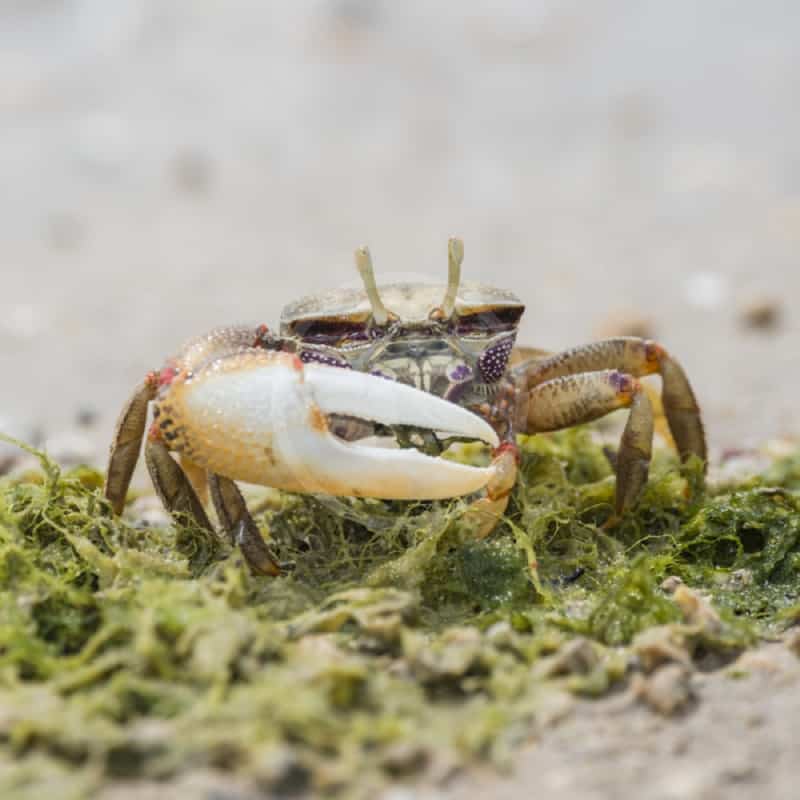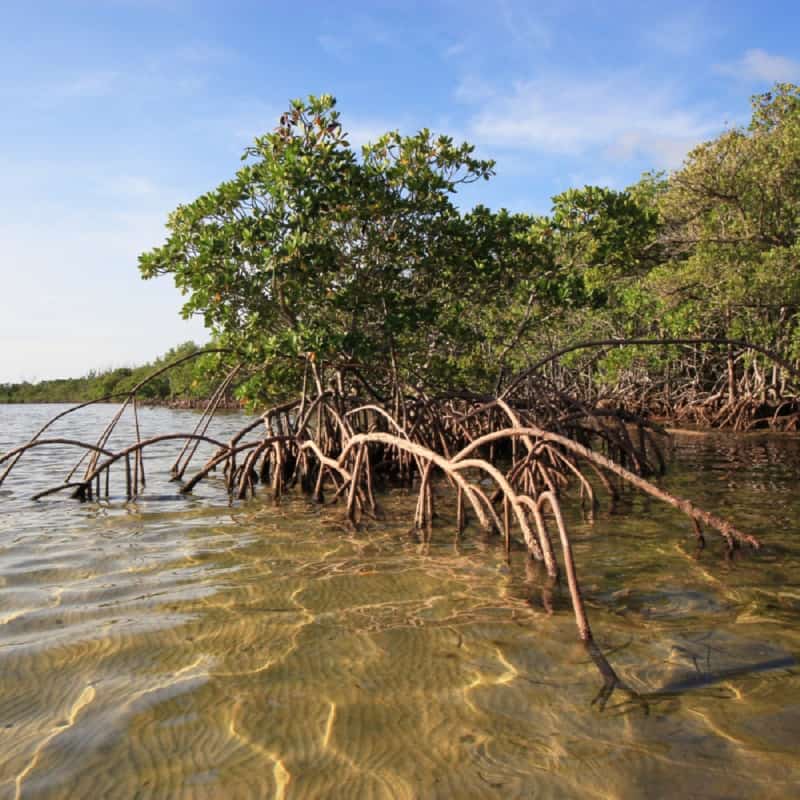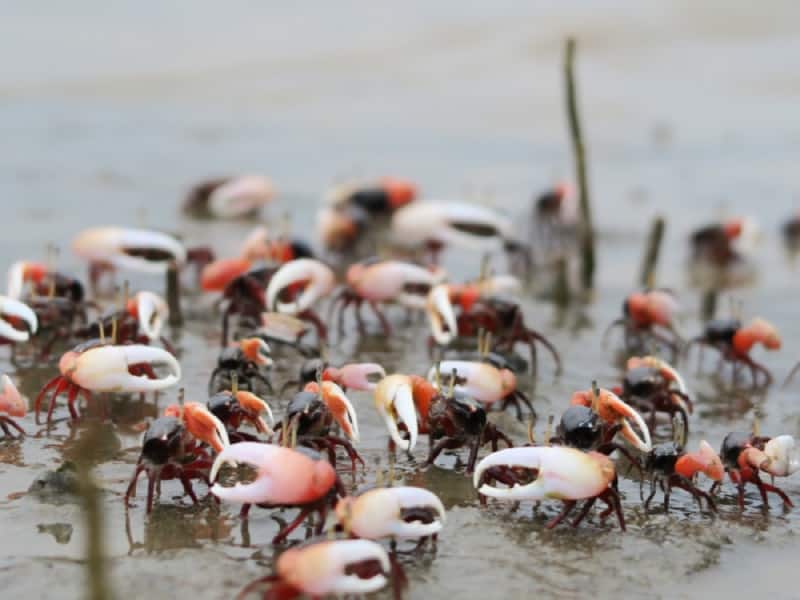SET UP – BRACKISH WATER – BEHAVIOR
If you’re looking for something other than fish for your aquarium set-up, fiddler crabs are an entertaining alternative full of personality! While these crabs are hardy, they do have some specific environmental requirements in order to thrive long term. This handout aims to provide husbandry information to keep fiddler crabs happy and healthy.
SPECIES INFO
There are over 100 species of fiddler crab in the genus Uca native to coastal regions. The ones often encountered in the pet industry come from Florida where they inhabit brackish marshes, lagoons, and swamps. The average fiddler crab can live between two and three years, and each a size of approximately 2” across. Fiddler crabs are social and do best in groups.
AQUARIUM
Fiddler crabs should be given a minimum tank size of 10 gallons to accommodate multiple Individuals. These crabs are also semi-aquatic, meaning they will require an area within the aquarium that is above the waterline. This can be constructed with an aragonite substrate, which is preferred over just standard aquarium gravel because this medium also contains important calcium and trace minerals in order for the crabs to molt properly. The substrate should be deep enough to allow the crabs to burrow. The height of the water portion of the aquarium only needs to be a few inches deep. We suggest an internal filter be used to help keep the water optimal, in addition to a heater to keep the water temperature stable (74 – 80° F). Partial water changes will have to be done routinely to keep nitrate levels low. Finally, a secure lid is an absolute must for fiddler crab aquariums as they can be escape artists, using cables and cords to climb out of the tank.


BRACKISH WATER
As mentioned above, fiddler crabs inhabit brackish coastal areas and therefore thrive best in an aquarium that mimics this environment. Most brackish tanks are kept at a salinity between 1.005 and 1.012. Unlike aquarium salt for freshwater, brackish tanks prefer marine salt however, this will inhibit compatible fish (see below under tankmates). To achieve this salinity, we Recommend mixing 1/8 cup of marine salt per one gallon of water. To err on the side of caution, use less. Check the salinity level by using a hydrometer or refractometer. If you do not want to go full blown brackish, we recommend at least adding aquarium salt. The general ratio is a tablespoon per five gallons of water. Without salt, fiddler crabs can have issues molting that could kill them.
DIET
Naturally omnivorous scavengers, fiddler crabs will thrive with a varied diet of flake foods, pellet foods, frozen foods, and sheet algae.
TANK MATES
Simply put, fiddler crabs do best as a species only tank because any fish added to the water Portion of the aquarium could be preyed on by the crabs. If you still want to give it a go, peaceful fish such as livebearers, tetras or danios make excellent choices (IF you used aquarium salt). Livebearers (guppies, mollies, swordtails) can also live in brackish water (IF you used marine salt), but would require a longer acclimation period to adjust (because ours in store are kept in pure freshwater environments).
BEHAVIOR
All in all, fiddler crabs are relatively easy and non-aggressive toward one another, but sometimes males may compete with each other for females if you have both sexes present. If push comes to shove, you may have to remove one if it gets too out of hand.
Did You Know? The ‘waving’ of their claw is a way for male fiddler crabs to communicate with each other and make their presence known.


